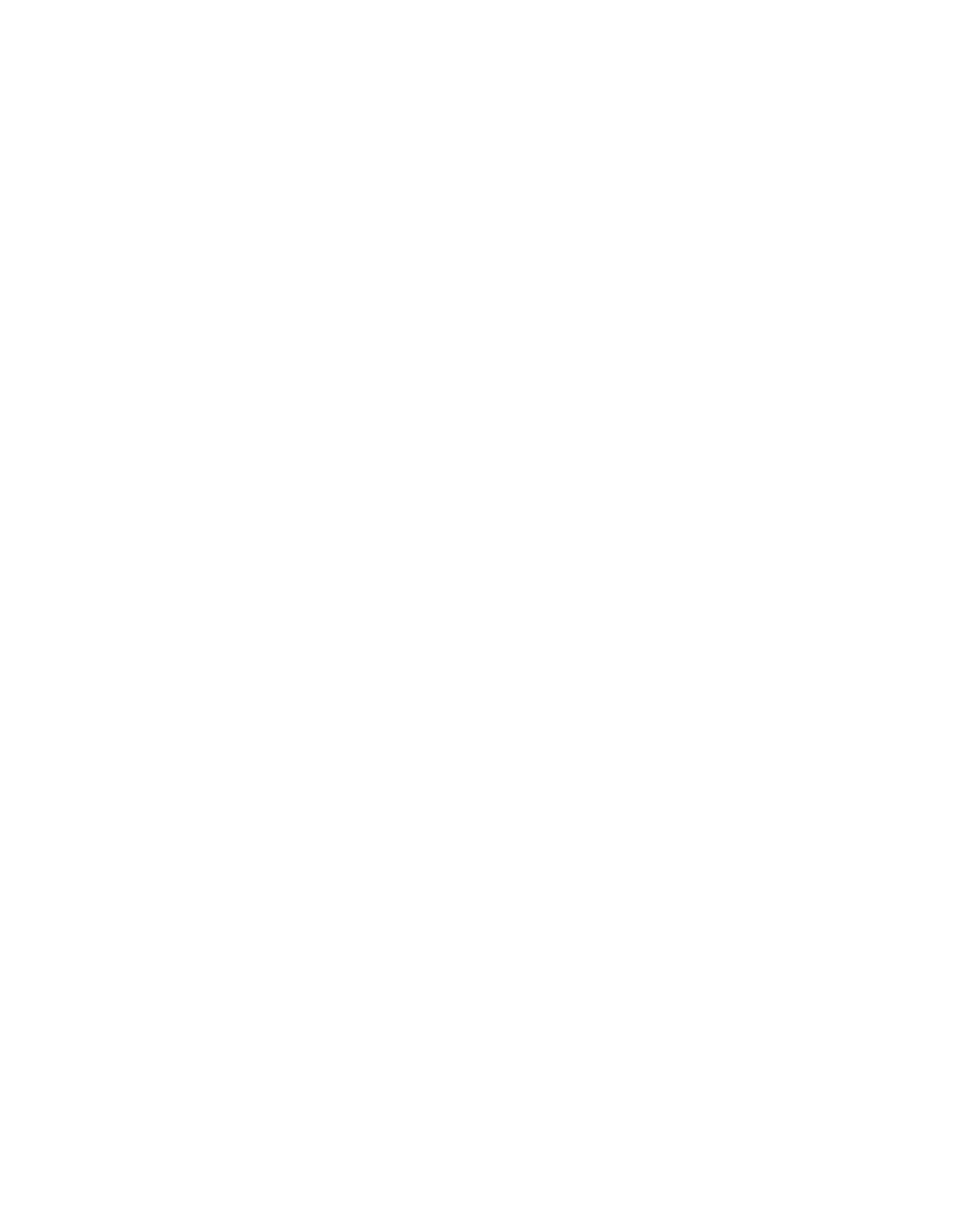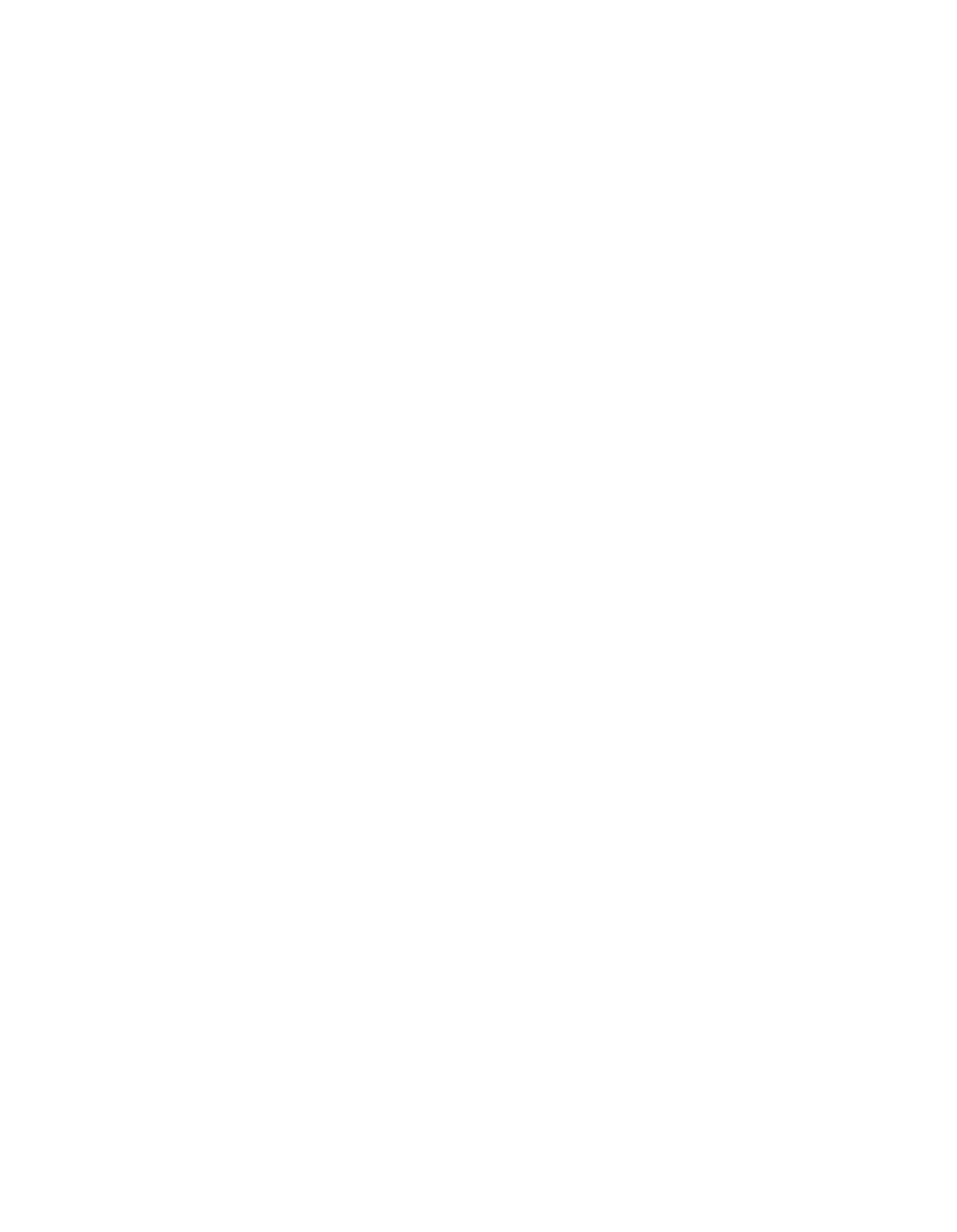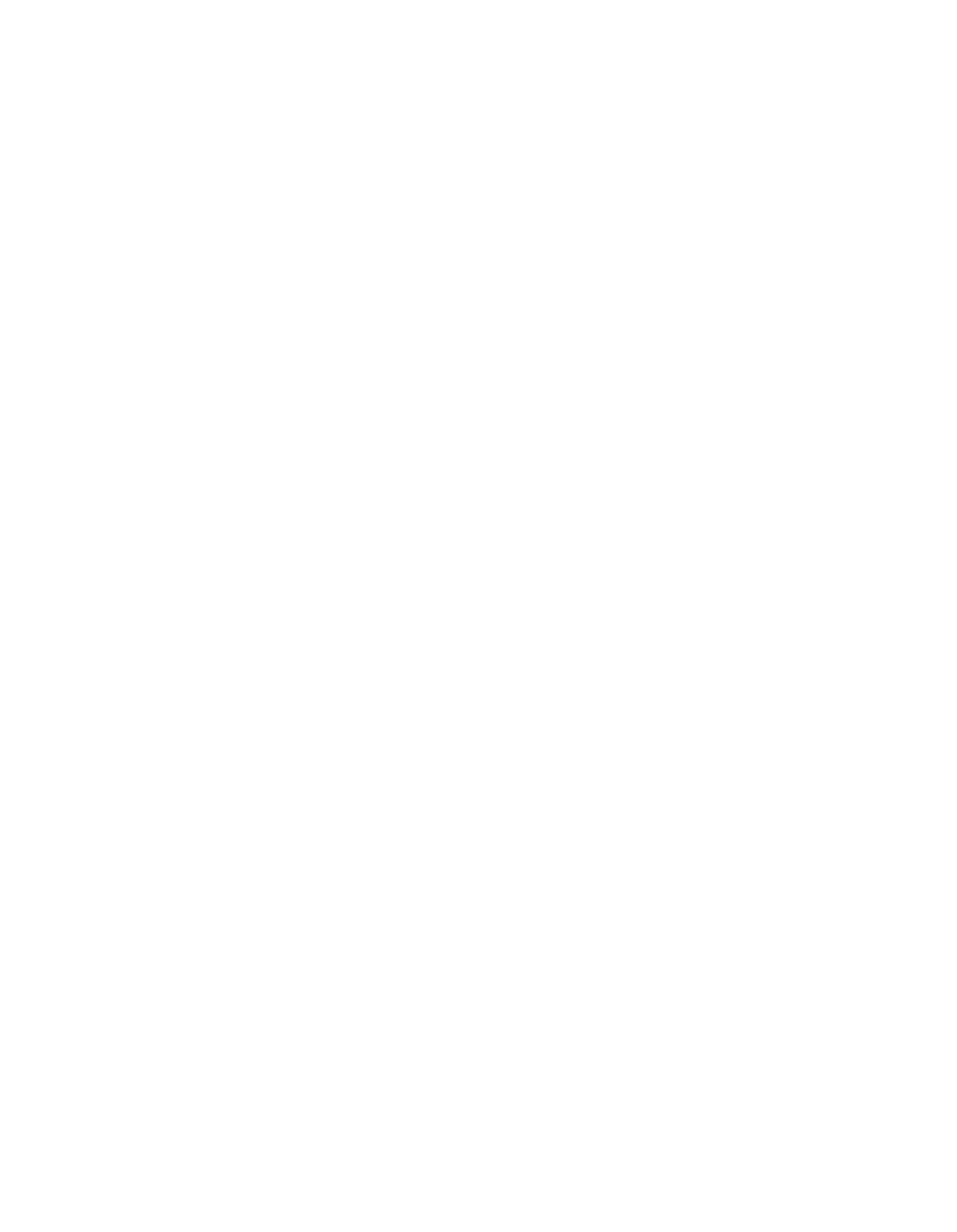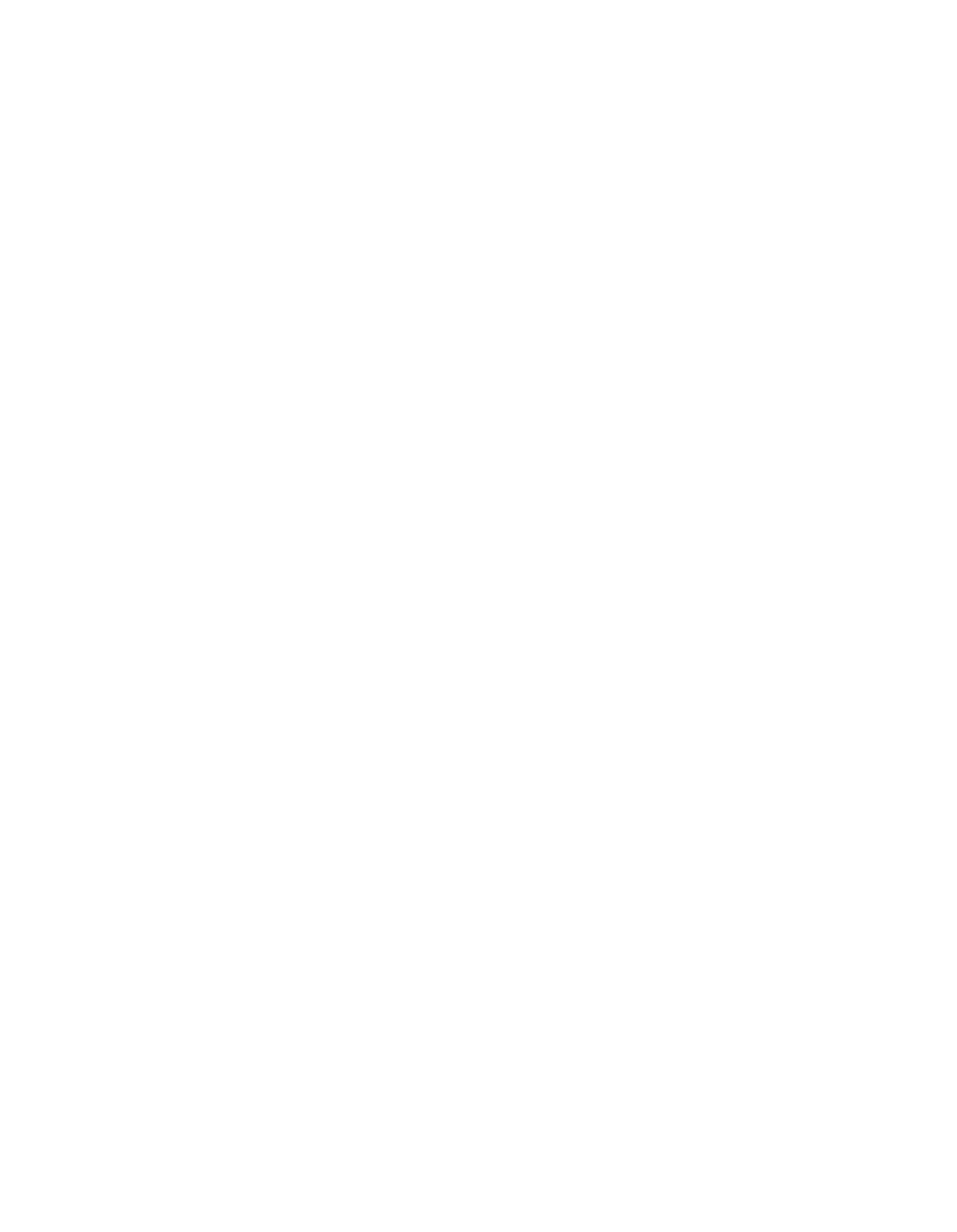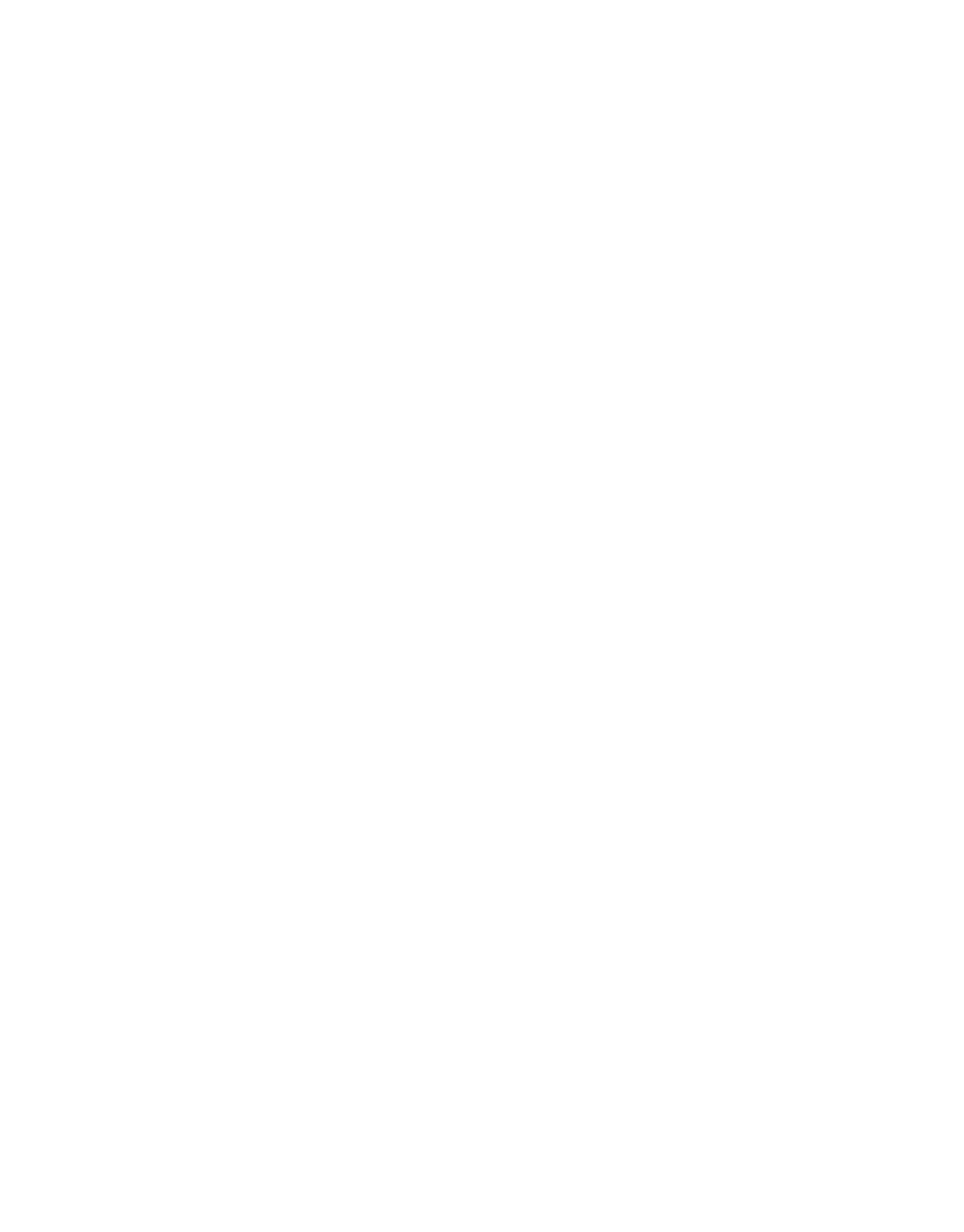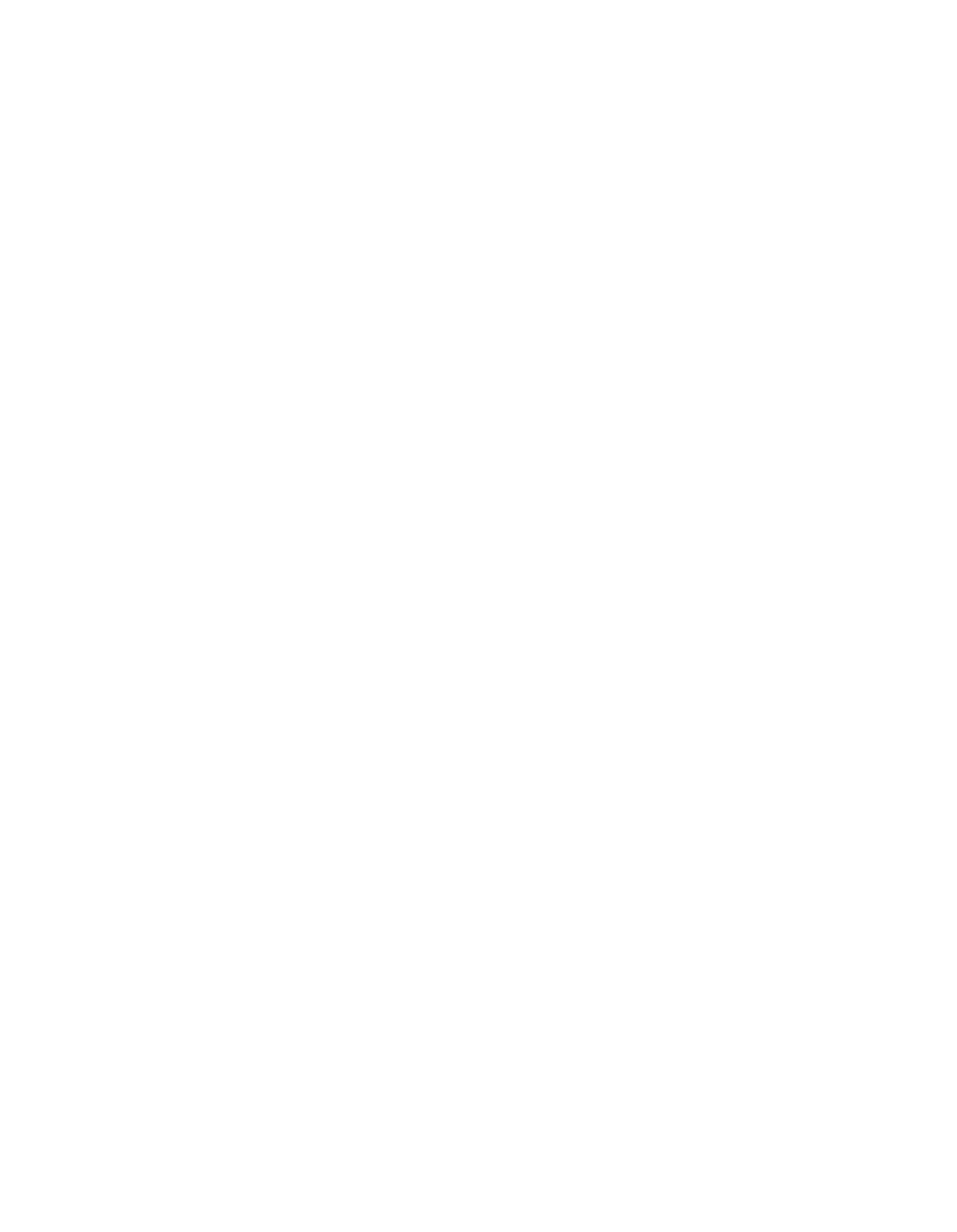ILLINOIS POLLUTION CONTROL BOARD
December
20, 1985
IN THE MATTER OF:
)
)
PARTICULATE EMISSION LIMITATIONS,
)
R82—1
RULE 203(g)(1) AND 202(b) OF
)
CHAPTER 2
)
PROPOSED RULE.
SECOND SECOND NOTICE.
ORDER
OF
THE BOARD
(by Jacob
D.
Dumelle):
On May 16,
1985,
the Board adopted
a Proposed Rule/Second
First Notice Order.
First notice was published at
9
Ill,
Reg.
10590, July 12,
1985.
Hearing was held August 13,
1985 and
various post hearing comments were filed during October 8—16,
1985.
The Village of Winnetkaes comments were accompanied
by a
motion
to
file
instanter since
they were
filed after the close of
the extended co~tmentperiod.
That motion
is hereby granted.
Winnetka also filed
an appeal from a hearing officer order
denying Winnetka’s renewed motion for hearing
to present site—
specific testimony.
The hearing officer order
is hereby
affirmed.
In general the comments address
four areas
of concern with
the proposed rules:
the opacity limitation,
the degradation
provision,
the effective date,
and the ~innetka power
plant.
OPACITY
The Illinois Environmental Protection Agency
(Agency)
argues
that the opacity standard
(35
Ill.
Adm. Code 212.123)
should be
adopted
as proposed.
(Agency Comments, Oct.
11, 1985,
p.
4).
In
a joint comment,
however, Electric Energy,
Inc.
(EEl)
and
Illinois Power Company
(IPC)
argue
that “there
is
no basis
to
support adoption of the opacity
standard.t’
(EEl and IPC
comments, p.1).
The disagreement centers on
the propriety of an
opacity standard as a “surrogate”
for
the particulate standard:
i.e. whether opacity violations are closely enough correlated
to
particulate violations
to justify an
independent standard.
The
Agency argues that “the opacity rule is an appropriate
substitute
for
frequent stack—testing of emissions from coal—fired boilers”
and that there
is
a
“high correlation with the exceedance
of the
applicable particulate limit.”
(Agency Comments,
Oct.
11,
1985,
p.4).
EEl and
IPC,
however, argue
that
“if the opacity standards
has
the possibility of being violated by a source which is
not,
at
that opacity, violating the particulate standard, then
the
opacity standard
is unsupportable.”
(EEl and IPC comments, p.2).
The facts
are unrebutted that there is not
a perfect
correlation between violations of opacity and particulate
emissions standards,
that
in.
the large majority of cases opacity
87-147
—2--
violations
indicate
particulate
violations,
but
that
there
ace
cases
in
which
a
violation
of
the
opacity
limitation
is
not
associated with
a particulate violation.
(R.
8/13/85, pp.
634—
637,
664,
687,
689,
707 and 716—719).
EEl and IPC note that
they
“GO
not
object
to
the use of opacity as
a surveillance or
guidance
technique,
possibly
as
a
trigger
to
a more detailed
investigation
of
a
source”,
but
they
believe
“the
Board
cannot
justify
...
imposing
civil
and
criminal
sanctions
for
violating
the surrogate, opacity standard knowing
that sources will
nonetheless be meeting the underlying standard.”
(EEl
and IPC
comments, p,4)~
The positions of the ~.gencyand EEl and IPC are not actually
far
apart.
As the Agency states~“the opacity limitation,
historically, has not been enforced by the Agency as any precise
measure of particulate emissions but as a qualitative
indicator
of operating situations which should
be
investigated.
For
example, the Agency may condition permits to require that
reporting,
in accordance with
35
Ill, Adm.
Code 201.263,
be done
whenever
the opacity exceeds the allowable
limi.t,”
(Agency
comments, Oct0
11, 1985,
p.5)..
Furthermore, as the Agency points
out,
it
cannot successfully prosecute
a case against
a source
in
violation of the opacity standard where
the
source can
demonstrate
that
it was
in compliance with the particulate
standard pursuant to
the exception of
35
Ill, Adm,
Code
212.124(c)
which establishes a showing of compliance with the
particulate standard as
a defense
to an opacity violation.
If
it
were possible
to readily establish that
a
source qualifies
for
the exception, there would seem to be little disagreement over
the proposed rule.
However, that is not the case.
John Yokom, an environmental consultant who appeared on
behalf of EEl and IPC,
testified at length regarding the
difficulties
involved
in establishing a relationship between
opacity and particulate matter emissions, concluding,
essentially,
that
such a relationship can only be definitively
established on
a site—specific basis.
(R.
8/13/85,
p.
674—
699).
Opacity
is
a function of numerous variables
including the
concentration of particles
in
the plume,
the plume’s diameter,
the particle size distribution,
the particle’s
index
of
refraction,
color
and light absorbing properties,
the
wave length
of
the
incident light, and the presence of uncombined
water.
CR. 8/13/85,
p.
674—675).
Since
the Agency has indicated that
it does not enforce on
the basis of opacity violations alone,
and since there
appears
to
be
substantial difficulty
in establishing qualification for the
exception,
the Board
has proposed the modification of the opacity
rule.
This has been done
in
an attempt
to ensure that
the Agency
can continue
to use opacity violations as a qualitative indicator
of operating situations which should be
investigated and
as
a
basis
for imposing monitoring or reporting requirements
in
permits,
but not
as
a means to impose civil
or criminal
penalties.
67-148
—3—
SECTION
212.203
The second major issue
is the
question
of
the
degradation
provision
of
Section
212.203.
The Agency apparently has no
objection.
to
that
provision
as proposed
for Second First
Notice.
In
comments
filed
on
October
8,
1985,
Central
Illinois
Light
Company,
Central
Illinois
Public
Service
Company,
Commonwealth
Edison
Company,
Electric
Energy,
Inc.,
and
Illinois
Power
Company
(Electric
Utilities)
include
the
following
statements
regarding
the
Board’s
attempts
in
this
proceeding
to
recognize
the
intent
of
the
original
degradation
provision
and
the impact c~new particuIa~etesting procedures
on the equity of
that provision:
The Electric Utilitie~1in the earlier comments and
here, contend that
the
equitable
relief
the
Board
intended
to
grant
by
ecoption
of
the
degradation
provision
may
be
unde:eined
or
even
lost
because
of
this
change
in
test
methods,
Earlier
in
this
proceeding
the
Board ~e~cognizedthis problem (Opinion,
December
6,
1984)
and
attempted
to
address
it.
In
its
more recent Order
(May 16,
1985),
the Board apparently
gave
up
on
the
attempt.
The
Electric
Utilities recognized
in the earlier
comments
that
the
effects
of these factors, degradation
and
changed
test methods and
requirements, cannot be
separated or specifically quantified.
Significantly,
as Electric Utilities pointed out, developments
in the
intervening 13 years can,
and have
in
many cases,
offset
or
masked
the
effects
of
these
two factors
(Utilities Comments
at 10—14).
One of the Agency’s
witnesses,
somewhat
reluctantly, agreed that this could
occur,
(Transcript,
August
13,
1985,
at
595—598,)
Furthermore,
as
Elect:ric
Utilities explained,
it
may
be
impossible
to
continue
to
mask
or
offset
those
effects
and
Electric
Utilities
should
not
be
penalized
simply
because
they
have
been
able,
to
date,
to
offset
some
of
those
effects.
(Elec.
Util,
Corn.,
p.
4)
The
Board
disagrees
with
the
assertion
that
it
has
given
up
the
attempt,
As
proposed
for
Second
First Notice,
Section
212,203(c)
allows
sources
which would otherwise be
required
to
meet
a
more
stringent
standard
to
emit
up
to
0.2
lbs/mmBtu
based
on
the
most
recent
stack
test
submitted
to
the
Agency prior
to April
1,
1985,
Since
such
a
st.ack test would
use
the new test methods,
this mechanism should
serve
to offset
the
effect of the change
in those methods.
While
the allowable limit
under
that subsection may differ from what
it
would
have
been
using
with
the
new
test
methods
originally,
it does allow the
same
margin
for
degradation
though
commencing
at
a
different
time.
67-149
The
degradation
provision
applies
to any source subject
to
Section
212,201
and
212,202
which
qualifies
under
certain
criteria
for
a
relaxed
1imitatior~..
As
of
the
most
recent
updating
of
affected facilities,
it
is
undisputed that all
facilities currently emit less than they would
be allowed under
the
original
rule
which
is
essentially retained
as Section
212.203(c).
Thus,
the
Board
believes
that
the
proposed
rules
retain
the original
equit.ahle
intent
of the degradation provision
and
respond
to
an
acceptable
degree
to
the changes
in test
methods..
The
E.ectrie
Utilities eieo ob~ect
to
the
possibility
“that
a
source
could
lose
its
spe
al
emission
limitation.”
(Elec,
Util.
Com,~ pp.
1—2),
and
pr~:pose
modified
language
to
avoid
that
possibility..~
The
Agency’s
response
is that~
In interpreting
and
applying
the
degradation
provision,
the Agency
has been
guided
by the Board’s
original
intent
in
adopting the
rule, namely,
to
“grandfather”
certain
sources
which
had
made
good faith
expenditures
in
control
equipment
just
prior
to
the
Board’s
adoption
of
the emission
standards..
However,
once
that
equipment
has degraded
to the point
that it
must be replaced,
then there
is
no
longer
a valid reason
to “grandfather”
that source.
The equipment
must
be
replaced anyway and the only question left
is the level
of performance which the new equipment should
be
designed
to achieve,
In these cases,
the Agency
believes that the new equipment should
be designed
to
meet the general
standard of
0,10 lb/million
Btu,
(Agency
Corn,,
10/11/85,
p.
10)
This concern was also addressed at hearing
(R..
8/13/85,
pp.
777—779), where
the Agency attorney explained
that on
the
occasions when the relaxed limitation was lost,
such loss
resulted
from
a consent decree and
the old equipment was
replaced.
The
Board
never
intended
that
the
“1oss~’ of
a
relaxed
limitation
should “occur ‘automatically’
based
on
some
ex,~arte
determination”
as
the
Electric
Utilities
fear,
Rather,
the
Board
agrees
that
such
“loss”
should
arise
in
such
a setting “that
the
Agency can advance
its
theory,
and
present
supporting
evidence
in
*The proposed language,
in both
sub—paragraphs
(a)
and
(b)
of
212,203,
states:
“and
the
emission
control
of
such
source
is
not
allowed
to
degrade
more
than
.....“
The
Electric
Utilities
again
urge
the
Board
to
modify
the
above—quoted
language
in
212,203(a)
and
(b)
to
read
as
follows:
“and
tee
emission
concrol
of
such
source
is
or
can
be
~
more than
.
67- 1~5()
an appropriate forum, subject
tc
the necessary procedural
safeguards.”
(tiec. UtAh
Corn,,
~
2~-). The Board, however,
declines to adopt the recommended ltr.guage change since it agrees
with the Agency that such lariquaqe
ts overly vague.
Instead, the
Board will restate its intent reqarcing this issue
in its final
opinion.
The Board, therefore, vi)
propose Section 212.203 in
the
same
form
as
it
did
in
it.:: Second First Notice, except that
Section 212.203(c)~3Iwill o’
dotted
as
‘innecessar:’.
That
section simply required ea.scon ~.lmttatLons
ietermined pursuant
to Section 2~.203(c)Cc.
.?
;tu.flv..wa
tc USEPA if the Clean Air
Act requires x’.
..?IVE
bitE
The ne;
najor
issue
the effectin
.
4t0.
In the Second
First Notice
.ie Board
i:
ed a cnpliani
*
tate of January 1,
1987, since
:.ese regu~a
6r~,
at leas
in theory, new
regulations.
The
Agency
.
nongly opposed this since so few
facilities
a’ e
out
of
ccli.
nee
and
deaying
the
efEective
date
would
correspondingly
de~.
C:niCt
~ct$on
bj
USEPA
to
redesignate
several
counties
as
attai
-n.
The
record shows that only one source, the Village of
winnetka’s generating stat on.
is
tn present violation of
Section 212.201.
That sou.ce wifl he further discussed below.
The Agency also provided information showing that only three
facilities are presently opedtiaq
in nolation of
Section 212.202:
the Galesbuc~Mental Health Center, the CWLP
Dallman Units I & 2, and the A.E. Staley Company.
The Galesburg
Center is scheduled to be shut down in late 1985;
the CWLP Units
are subject to a Consent De:r4e e’itred into wtth the Agency and
USEPA that calls for new electrostatic ~recspitatorsto be
installed by 1987; and Sta.ey
has entered into
a settlement
agreement with
the Agencj wher.*by it will either retrofit a
baghouse onto
the existing
‘o&snLhcnase
or build an entirely new
boilerhouse,
depending
upon
the
outcome of engineering studies
presently being conducted.
The
‘attainder of the sources listed
in Ex. 10, p.
54 are either shut down or the noncomplying
equipment
is not used
any tonç.OL
o:
is used only as emergency
backup equipment.
Thus, except for
the Village of Winnetka,
there appears to be no reason to have a delayed compliance date,
and
the Board will, thecefoza, propose that the rules be
generally effective when fsla~.
VILLAGE OF WINIIETIA
The last major issue concecr.s the Village of Winnetka.
Throughout this proceeding the Vil1age has attempted to put
information into the rtc’ord t, es :ahlish s site—specific
limitation applicable to Winne~a’ s
jenerating station.
To some
extent, such e”idence has been allowed as appropriate to an
affected faclUty under
U’.
•.
‘&
ruL..
qoweyec,
the Board has
stopped shc
~..
C
~llow’tu4
..
;i~
:t.
~
:th
anformation
sufficient
~c .etablish a’~~
•‘,~ecsfsc :&.c’.
Even so, Winnetka
67-151
6-
has been
able
t3 de
for no other
reasc
‘1
participated in
‘
compliance or s
e,t
t
come into compli.
cc
demonstrates th t
.t
ambient
air
quali
‘
s
amar
pp. 143—149; ard R
/
is
presently
p°rn
.e
F
s
ur
que
in the state, if
La Ut y which has
i
s not
present
agreemart requiring it to
“t
he
record
ur
‘0 0.
1
lbs/mmfltu, the
vi.
-
c.
e
ened
a
8/3/83,
)
i
t
.°
a
t
Winnetka
t
0 2’ lbs/maBtu.
d
.
,
c
ion
‘0
establish a
j
ii
w
i
a general
01
1
~ otection Act
ab’
ty wi.1.
sometimes be
a
v
‘tue
i
deirorstrated
aeb)
of
the
ca
‘w
it would be
o
-
or
f
‘*r ance from that
tc.
-~
r~
y ataying the
f
a
pet’
tion.
That
b
tiiret a were it
di.
~
e
I’
c~qiasted relief
from
£
1
utth’t’l of its
ti
i~
cavding
itie
-
‘ket for site—
..ia
filira
f such a
p
t’c.ular
true where
as
a~
t
lue
othe
•
r
h’ economic
4
sb
if
raGucang
the
r
tng
‘a iance the Board
rabli
ia:dsh p
This record
g~e a)
‘ardard is
1
f*asible it t~atnearly
c
a
n
~ly in compliance
$
c rd aLo di’closes that
e
en ive
though
~a
ir’cs
r
ar~rallynot granted
-i’
a
i
Is iç
is
affordable
t
stif,. variance
t -s cc-tic
ru e could be
i
it
ac
f”t..
Thus,
C
‘t Jr not granted any
pp op’ ‘ate
to exempt
c
‘
reached on
o
rure that
Li
s~
it
determines
Ii’
•s
ih
u
)a.
CC
o.O
.1
it.
I
‘It
Certairly
~‘e B a’
site—specific
rule
is
u ider
idq-
.z
recogn’ies
.1
unfairasaop
.1
oo.
by the fact
ti
me’
Act which al
ftctli
unfairly
impa’
b
a
rule
within
0
s
c..
rule’s
effec.
o
a
avenue of ral.
•
1
not all3wed som
.aJie’
However, si.ce V n~e
the rule
and been
len
~o
evidence in support of
appropriate for
the B
itt
t.
specific relief shoild Wi.
proposal
is appropriatc
4h
here,
the variance aectanisi
differeicei oofb
a
proceeding.
In a rule iak
g
i
oar
reasona.e~ees~a.$ ~a
..i
a
a
particilar pollutior
wiercas
must
find
a’t ataitrar
or
c
establishes
thd..
compl’a
econom’ call y
reaso
‘i
tote
a
id
all of the ta
itit.
s ‘r ~ e
and have beer
tot
~
r
ii
compliance wit’
th
;
a
affordable
to’ Wi
-
where the sole baa-s f
c.
cost,
and itma’
t
i
Win.
relief
On th. o her
r~i
appropriatc depend~na
0
c.
Winnetka faces a potertt-l
relief
in this procecJ~
a
a
Under these circuastir
Winnetka fros
t’~
ge e”
the site—ap
ta
-
Winnetka expei
.
.ly ~
“
it
that such relief ~
.
e
-(
become effective in e-s Walt
t
specific relief iutrin
6
a
~‘
-,
general rule, and thit
~.
et
two years only.
ku~t’tr,
ti
2o
lb/mmBtu standard to be ~p
t
since that is the
.
a-en
1
e
Winnetka has irdt
,,‘,.
-
endanger
the airbieft a’
q
i.
become effec~i.
‘
,o
~‘
-
I
specific relis
and shal
regardina tia
.e
a .f
i~
t
a
end of the
tv
~.‘
pe
incor
4rate
b’
eferenc.°
~,,
copie-
of
tne
ferenced
lid
site-specific oocket
tie Board lere
Second
Notice:
Section 20
0
C.
t
IIPLE 3~
~N
FUBIJILL P
1
CRAPPER
I
1
1
U
SUBCHAPTER
c:
En ~S’I
F
S~P~C’1
PERMITS t
I
0
I
£
.~sccaptinwillnot
‘-
a p cposal for site-
,
e
Lye date of the
e cftective for a period of
J
establish a 0.25
i,
ttis exemption period
~i Intl
vh4~his the minimum
•
vhicn rhould n~t
C
ir1
The exemption shall
ot
a petition for site—
‘‘a
dc ermination
t
i~
ta’e
prior
to
the
r’ctPa
vill
be
allowed
to
‘s of t)e R82-l record, if
rcsubii ted under
the
ovi~
a.e~dmentsfor
kt
PLCTION
LU ‘ION
‘itR3.
BOARD
IJU
AND
LIMITATIONS
a ~a
fl
S’s.-
It
I
It CONS
‘Air Crtaaina1
odor
or any I
-
into ~hc
a~urp1
‘~
as
‘Air Polluti r Cont”cl Bi
ofatypeint
4,
t
a,
3
the
emission
o
epc3i
u
‘Air Polluti
$
$
la
r
•
more air con -u
r
nte
characteristi s and duro-
r
plant
oraialli*
e
unrca~orat
-
c. e
w,,.
property
‘Ambient
An
•
the,.
-‘
buildtngs~.omc
ij-
‘Ambient
Ar
iality
5’
from
Iga
t
‘i
~.
J
pursu
at
t
Ill.
Ad
..~
43
o
d
Cr
jaseous matter, any
pabl
of being released
c
my
quipmeat
or
facility
ave
,
reduce or control
r
mar
s to the atmosphere.
•
a
c.spht. e of one or
en
ties and of such
~ itjurious to human,
1
t
property, or to
tart of life or
t
tmoapte e external to
•
c.
r-andards promulgated
r
I
mrd (Board)
found at 35
t e~Fnsironrnental
anj
en
1’
I
ouutc..v
7
Protection Ager’
(Ufl
ox., ~
to authority contained
in
42 U.S.C. 7401
ot
seq
,
a~au
•
f
time to time
‘Clean Air &c”:
tie C ea
Air At of 19 0, as amended,
including the Clean Am
*“
;mendn
i
•
o
1977, as amended
(42 U.S.C.
740.. et seq
‘Commence’:
tie a t
C st~
d
ig agreement or
contractual oblmga
r
i
cr ~
a
.1
.
nplete, within a
reasonable tire,
1
1
~10 in of construction or
modifications
‘Constr ucton’:
‘on
.rc
te ctbricition,
erectioi
0:
mnstel a
04.
~
C.
stop source or of air
pollutiot
ontrol eq
‘Emissic..
sour e’•
•c. to cit or
t
ity of a type
capable o
enittina
I ed
3
am’. an-s to the
atmospher.-.
‘Existing
air
Pollu.
it
0~
Epa
pre
t
any air
pollution control equ
i°
t,
ti°
cor
r
ion or modification
which has commenced pri
r to April 14, 1972.
‘Existing Emission So,a
~‘-
•n7 e.,isoiou source, the
construction or modification of vtich ha°commenced prior to
April 14, 1972.
‘Modification’:
any
physic.
thange in, or change
in the
method of operations, of at er
es’ n ~ urce or of air
pollution
co trol
~
c
r
tie
amount of any
specified air con-attn
eat ted
y ~ucrsource or equipment
or which results in
~e cmi.
‘i a of ‘my c’pecified air
contaminant ra
ore
1
cii
d
t shall be presumed
that an incre. e
‘n
it
ta
-
.n
.
teri’.ls, the time of
operation or t
c. rate
5 p
odu
ion will change the amount of
any
specific
air coita’rin-tt emitteC
Notwithstanding
any
other provi~
of
~jt
afiriti
for purposes of permits
issued pursu
to Subpt
-
D
t
Illinois Environmental
Protection Age c
(?gen y
nay
peci..y “ondftions under which
an emission
‘
ucce or air
ollu’
n
crtrol equipment may be
operated wi
t
t c
ama a m diEicati
r as herein defined,
and
normal c’
ica
variati
i.,
before
‘he date operating
permits are reqtired
stall not
e cona dered modifications.
‘New Air Pollution
‘onvrc.l
Lou
fri cit
$
any air pollution
control equi~tent,the cc.tstructioi
a
modification of which
is commenced on or after Aprm
14,
1972.
‘New Emission Sousce’:
a~y a
urce, the construction
or modification of whic’i
i”
c miterceo
n
r after April 14,
1972.
6’-154
‘Person’:
dy
i
dividual,
associatior, trust estate,
group, ager’y, political s
legal
succe
bo
,
a
es nt
foregoing.
‘PSD Increr°it’.
th’ ma
r
baseline c~centrati
I
by Section
C3
of the
e
regulaticn~‘dopted the cii
c
‘Standard
s
Industrial
Documents,
20402.
Section 201.10-
I
o’able
increase
over
r
c)
ax
rant
as
determined
Ac
(
2
.b.C.
7473j
and
ustrial C)ae
tior
Lianual’:
The Standard
.aasiftcat on far al
1972), Superintendent of
.5. Governrent I mnting Office, Washington, D.C.
Abbreviatio. a an
Units
a)
The
following
abbreviatto
5
have been used in this Part:
btu or Btu
gal
hp
hr
gal/mo
gal/yr
kPa
kPa absolute
kW
1
mm
or M
MW
psi
psia
English
1
gal
1000 gal
lhp
1
mm~ts./tr
1 psi
British thermal units
(60 F)
cal
ior
‘eoo
icr
10
cairo as
per
morth
ga
one oar year
&i.
opascais
¼ilcpascals absolute
kilowatts
liters
r
‘llioa
teja.
.L,
one million watts
o
-
er square inch
p0 ~d
per square inch absolute
ye
ii,,
3,
3,..
bic meters
I
1c1
I
it
‘Owner or Opera or’:
any cerso’
h
owns, leases, controls
or supervises or emission a ‘rcc o
a r pollution control
equipment.
tora ion
arthership, firm,
ubii
or private institution,
b i
‘
‘or
or agency thereof or any
.s
aç
t
agency of the
‘Specified .ir Contammnait
ny air contaminant as to which
this Subt”
contairs e irsio
.‘arda ds or other specific
limitatioVs
b)
The foll wmrg conversion facto a
iave been used in this
Part•
67*
—10—
PART
211
DEFINITIONS AND GENERAL PROVISIONS
SUBPART B:
DEFINITIONS
section
211.121
Other Definitions
All
terms defined in
35 Ill. Adm. Code 201 which appear in 35
Ill. Adm.
Code 211—217 hive the definitions specified by 35 Ill.
Adm.
Code
201.102.
Otherwise
the
definitions
specified
in
Section 211.122 apply.
PART
212
VISUAL AND
PARTICULATE
MATTER EMISSIONS
SUBPART B:
VISUAL EMISSIONS
Section 212.123
Limitations for All Other Sources
a)
No person shall cause or allow the emission of smoke or
other
particulate
matter
with
an
opacity
of
greater
than
30 percent into the atmosphere from
any
emission source
other
than
those
sources
subject
to Section 212.122;
provided,
however,
that
the
exceedance
of
this
standard
shall
only
be
a
violation
for
purposes
of
the
establishment
of
permit
conditions
concerning
monitoring
and
reporting
requirements.
b)
Exception:
The
emission
of
smoke
or
other
particulate
matter
from
any
such
emission
source
may
have
an
opacity
greater
than
30
percent
but
not
greater
than
60
percent
for
a
period
or
periods
aggregating
8
minutes
in
any
60
minute
period
provided
that
such
more
opaque
emissions
permitted
during
any
60
minute
period
shall
occur
from
only
one
such
emission
source
located
within
a
305
m
(1000 ft)
radius from the center point of any other such
emission
source
owned
or operated by such person, and
provided
further
that
such
more
opaque
emissions
permitted
from
each
such
emission
source
shall
be
limited
to
3
times
in
any
24
hour
period.
SUBPART
E:
PARTICULATE
MATTER
EMISSIONS
FROM FUEL
COMBUSTION
EMISSION
SOURCES
Section 212.201
Existing Sources Using Solid Fuel Exclusively
Located
in
the
Chicago
Area
No person shall cause or allow the emission of particulate matter
into
the
atmosphere
from
any
existing
fuel
combustion
source
using solid
fuel exclusively, located in the Chicago major
metropolitan area, to exceed 0.15 kg of particulate matter per
MW—hr
of actual heat input in any one hour period (0.10
lbs./MBtu/hr)
except
as provided in Section 212.203.
67-156
~li~
Section 212~202
Existing
Sources
Using Solid
Fuel Exclusively
Located
Outside
the Chicago Area
No
person
shall
cause
or allow the emission of particulate matter
into the atmosphere from any existing fuel combustion source
using
solid
fuel exclusively, which is located outside the
Chicago major
metropolitan
area,
to
exceed
the limitations
specified
in
the table below and Illustration A in any one hour
period except
as
provided
in
Section
212.203.
__________
_____
METRIC
UNITS
Megawatts
______
~
~ hour
Less than or equal
to 2.93
1.55
Greater
than 2.93 but
3,33H’715
Smaller than 73.2
Greater
than
or
equal
to 73~20.155
_______________
_________
ENGLISH
UNITS
____
Li9~L___~_~_~__
!_~
___
Million Btu~
__
~~sermillio~tu
Less than or equal
to 10
Greater
than
10
but
0
smaller
than 250
5,18 H~.715
Greater than or equal
to
250
0.1
where
S
=
Allowable emission standard
in lbs/MBtu/hr
or kg/Mw~hr
of
actual heat input,
and
H
=
Actual heat input
in million Btu per hour
or megawatts
Section 212.203
Existing Controlled Sources Using Solid Fuel
Exclusively
Notwithstanding
Section 212.201 and 212,202, any existing fuel
combustion
source using
solid fuel exclusively may,
in any one
hour period, emit
up to, but not exceed 0.31 kg/MW—hr
(0.20
lbs/mmBtu),
if
as
of
April
14,
1972, any one of the
following
conditions
was
met:
a)
The
emission source had
an hourly emission rate based
on
original design or equipment performance test
conditions, whichever
is stricter, which was less than
0.31 kg/MW—hr (0~20lbs/mmBtu)
of actual heat input,
and
67~157
—12—
the emission control of such source is not allowed to
degrade
more
than 0.077 kg/MW—hr (0,05 lbs/mmBtu)
from
such original design or acceptance performance test
conditions; or,
b)
The source was in full compliance with the terms
and
conditions of a variance granted by the Pollution
Control Board (Board) sufficient to achieve an hourly
emission rate less than 0.31 kg/MW—hr (0.20 lbs/mmBtu),
and construction
had
commenced on equipment or
modifications
prescribed
under
that
program;
and
emission control of such source is not allowed to
degrade more than 0.077 kg/MW—hr (0.05 lbs/mmbtu)
from
original
design
or
equipment
performance
test
conditions,
whichever
is
stricter,
or,
c)
The emission source
had
an
hourly
emission
rate
based
on
original design or equipment performance test
conditions, whichever
is stricter, which was less than
0.31 kg/MI—hr (0.20 lbs/mmBtu) of actual heat input, and
the
emission
control of such source has not been allowed
to degrade more than 0.77 kg/NW—hr
(0.05 lbs/mmBtu)
from
that rate demonstrated by the most recent stack test
submitted to
and
accepted by the Agency prior to June 1,
1985, provided that:
1)
Owners and operators of sources subject to this
subsection shall apply for a new operating permit
within 180 days of the effective date of this
section;
and
2)
The application for a new operating permit shall
include a demonstration that the proposed emission
rate,
if greater than the emission rate allowed by
subsections (a) or
(b) of this section, will not
under
any
foreseeable operating conditions and
potential
meteorological
conditions
cause
or
contribute
to
a
violation
of
any
applicable
primary
or
secondary
ambient
air
quality
standard
for
particulate matter, or violate any applicbble
prevention of significant deterioration
(PSD)
increment, or violate 35 Ill. Mm. Code 2Ql.141;
and
Section 212.204
New Sources Using Solid Fuel Exclusively
No person shall cause or allow the emission of particulate matter
into the atmosphere from
any
new fuel combustion emission source
using solid fuel exclusively to exceed 0.15 kg of particulate
matter
per
MI—hr of actual heat input (0.10 lbs/mmBtu)
in
any
one
hour period.
67-158
Section 212.205
Village of Winnetka Generating Station
Notwithstanding any other requirements of this Part,
if
the
ViUsge
of ~innetka files
a petition
to establish site—specific
particulate standards
for
its generating station within 60 days
of
the effective date of the rules adopted under docket R82—l,
the Village of Winnetk&s generating station shall
not emit
particulates
at
a
level
more
than
0,25
lbs/mmBtu until ~1anuary1,
1988,
or until
a final determination is made
on that
site—
specific rulemaking, whichever occurs
sooner.
IT
IS SO ORDERED.
Board Member
B,
Forcade dissented.
I,
Dorothy M.
Gunn, Clerk of the Illinoic Pollution ControI~
Boar~,hereby certify
that the
above Order was adopted
on
the
~
day
of
____________,
1985 by
a vote
of
~/
Dorothy M, Gunn,
Clerk
Illinois Pollution Control Board
67459




